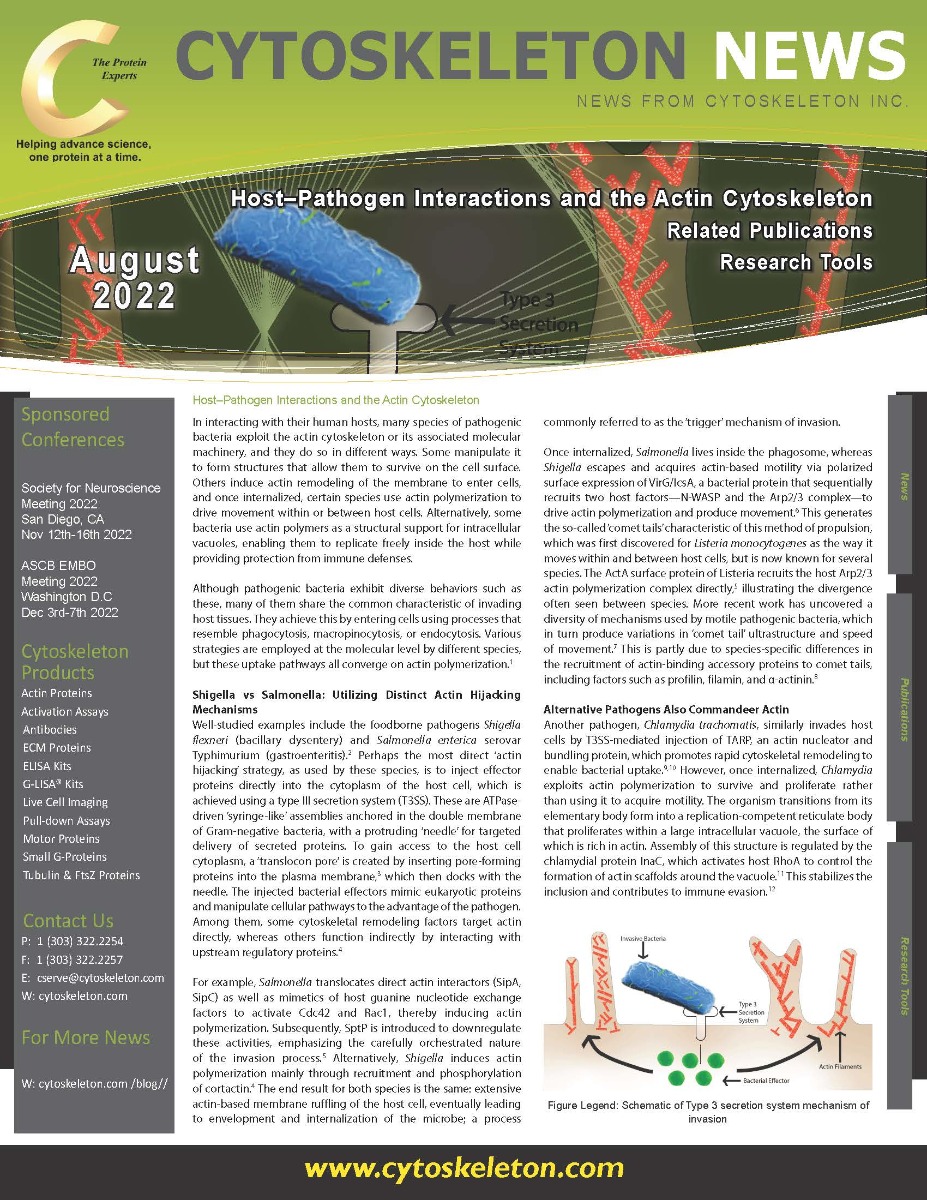Host–Pathogen Interactions and the Actin Cytoskeleton
- By Cytoskeleton Inc. - Actin News
- Aug 4, 2022

In interacting with their human hosts, many species of pathogenic bacteria exploit the actin cytoskeleton or its associated molecular machinery, and they do so in different ways. Some manipulate it to form structures that allow them to survive on the cell surface. Others induce actin remodeling of the membrane to enter cells, and once internalized, certain species use actin polymerization to drive movement within or between host cells. Alternatively, some bacteria use actin polymers as a structural support for intracellular vacuoles, enabling them to replicate freely inside the host while providing protection from immune defenses.
Although pathogenic bacteria exhibit diverse behaviors such as these, many of them share the common characteristic of invading host tissues. They achieve this by entering cells using processes that resemble phagocytosis, macropinocytosis, or endocytosis. Various strategies are employed at the molecular level by different species, but these uptake pathways all converge on actin polymerization.1
Also included in this newsletter:
- Actin Tools
- Related Publications

